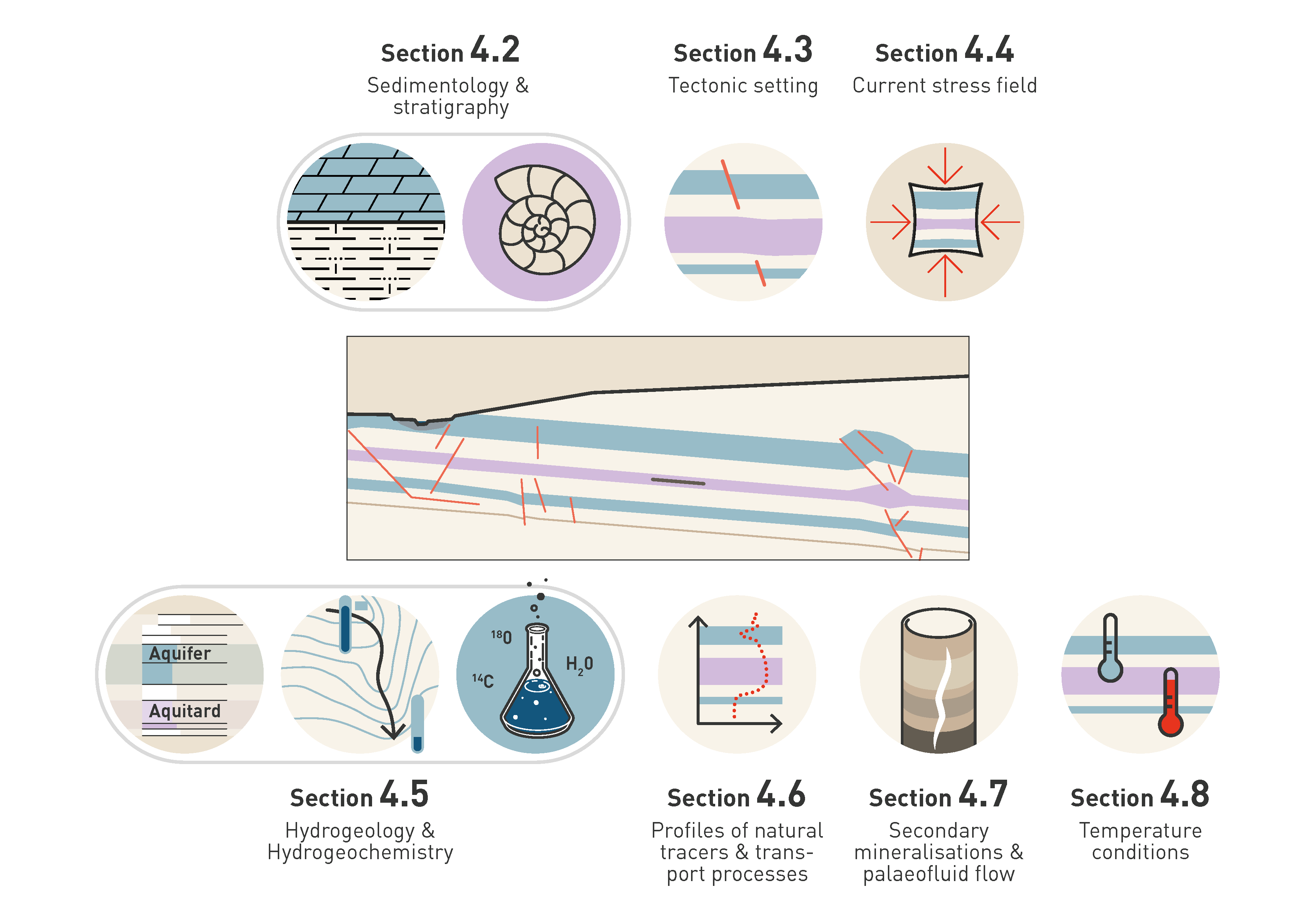This chapter is dedicated to the characterisation of the study area in Northern Switzerland with respect to sedimentation, diagenesis, tectonic deformation, current stress field, hydrogeological and hydrochemical characteristics and current temperature conditions. The focus is on the safety-relevant geological units from the base of the Schinznach Formation (upper Muschelkalk Group) to the top of the «Felsenkalke» and «Massenkalk» (upper Malm Group). This sequence includes the host rock, the surrounding low-permeability confining units and the bounding aquifers. The chapter provides a description of the present situation, but frequently refers to the past evolution because this is key for understanding the current situation. For example, the lateral variability of properties of a certain unit is closely related to its depositional environment.
The chapter highlights similarities and differences between the three siting regions and forms the framework for Chapter 5, which focuses on safety-relevant properties and processes in the clay-mineral-rich core of the geological barrier (the Opalinus Clay and adjacent low-permeability rocks). The detailed description of the geological barrier also forms the basis for the assessment of its future evolution, which is discussed in Chapter 5.
Fig. 4‑1 visualises the topics covered in this chapter. Section 4.2 focuses on the sedimentology and stratigraphy of the geological units of main interest (base of the Schinznach Formation to the top of the «Felsenkalke» and «Massenkalk»). Section 4.3 describes the tectonic situation in the siting regions and in a larger regional context. In Section 4.4, the recent stress field is characterised. Section 4.5 addresses the hydrogeological and hydrochemical situation in the aquifer – aquitard sequence. Past transport in the host rock and confining units is discussed in Section 4.6 (investigations of profiles of natural tracers in the porewater) and in Section 4.7 (investigations of secondary mineralisations). Section 4.8 describes the current temperature conditions. The final Section 4.9 summarises the most important project-specific conclusions, including a site-specific definition of the extent of the lower and upper low-permeability confining units.

Fig. 4‑1: Schematic overview of the content and structure of the chapter

